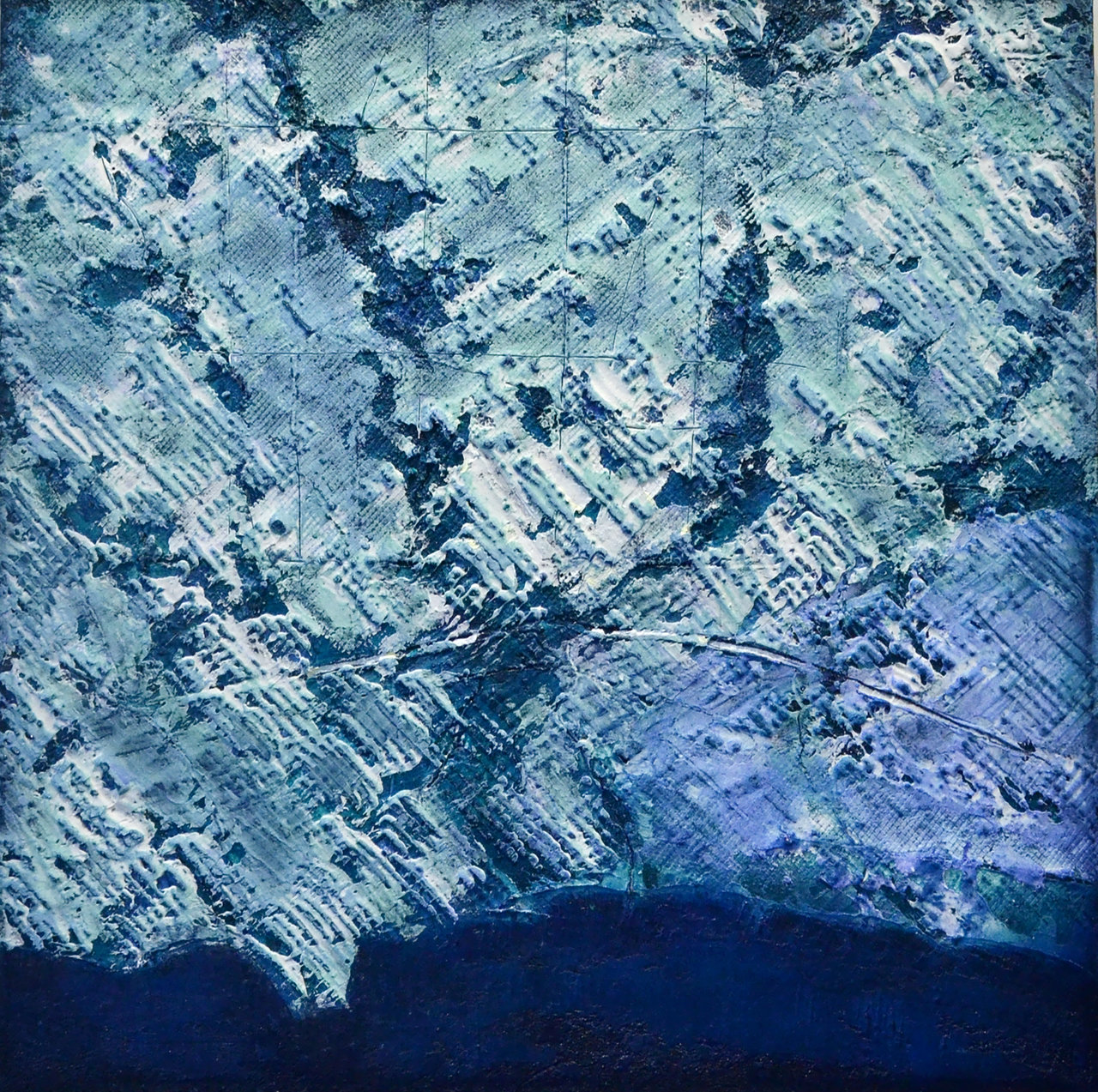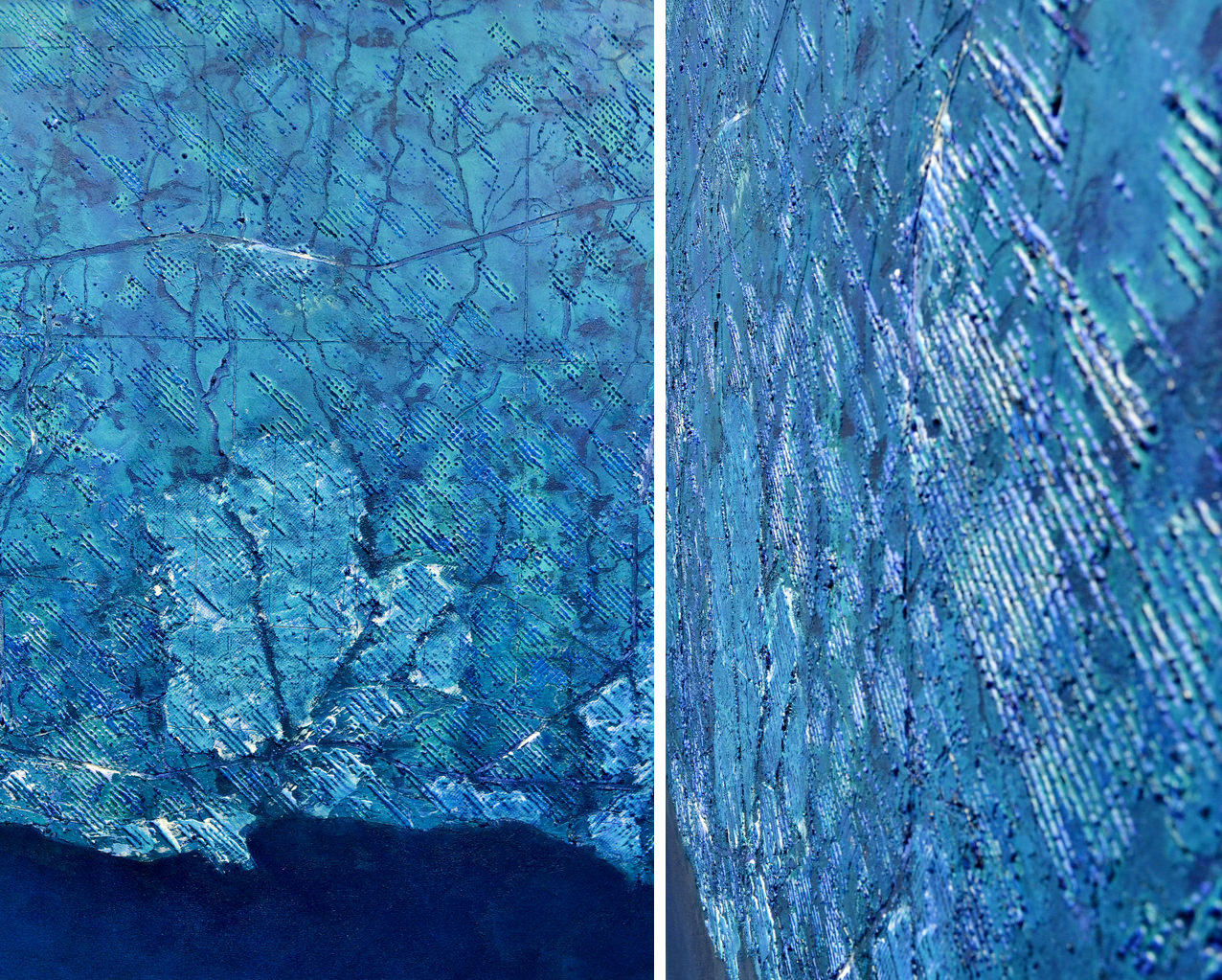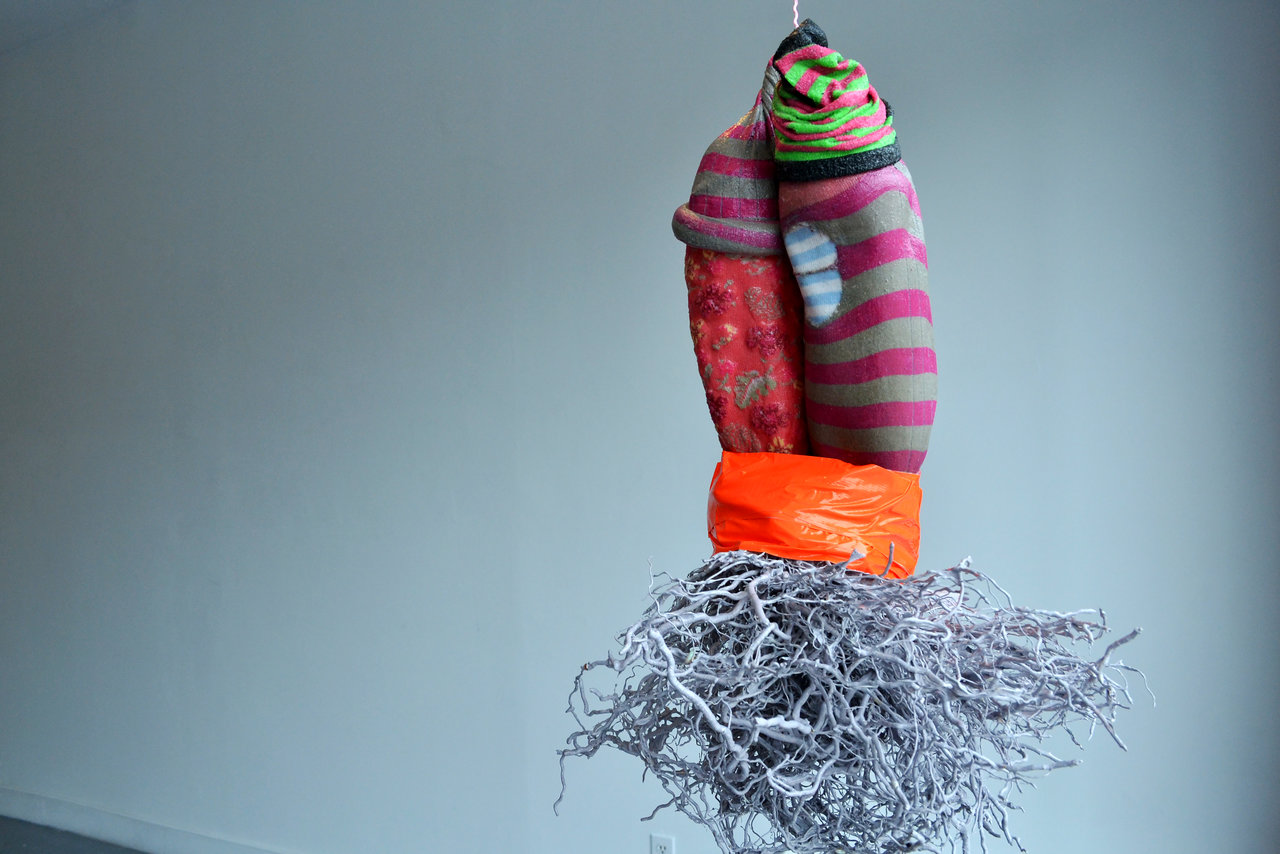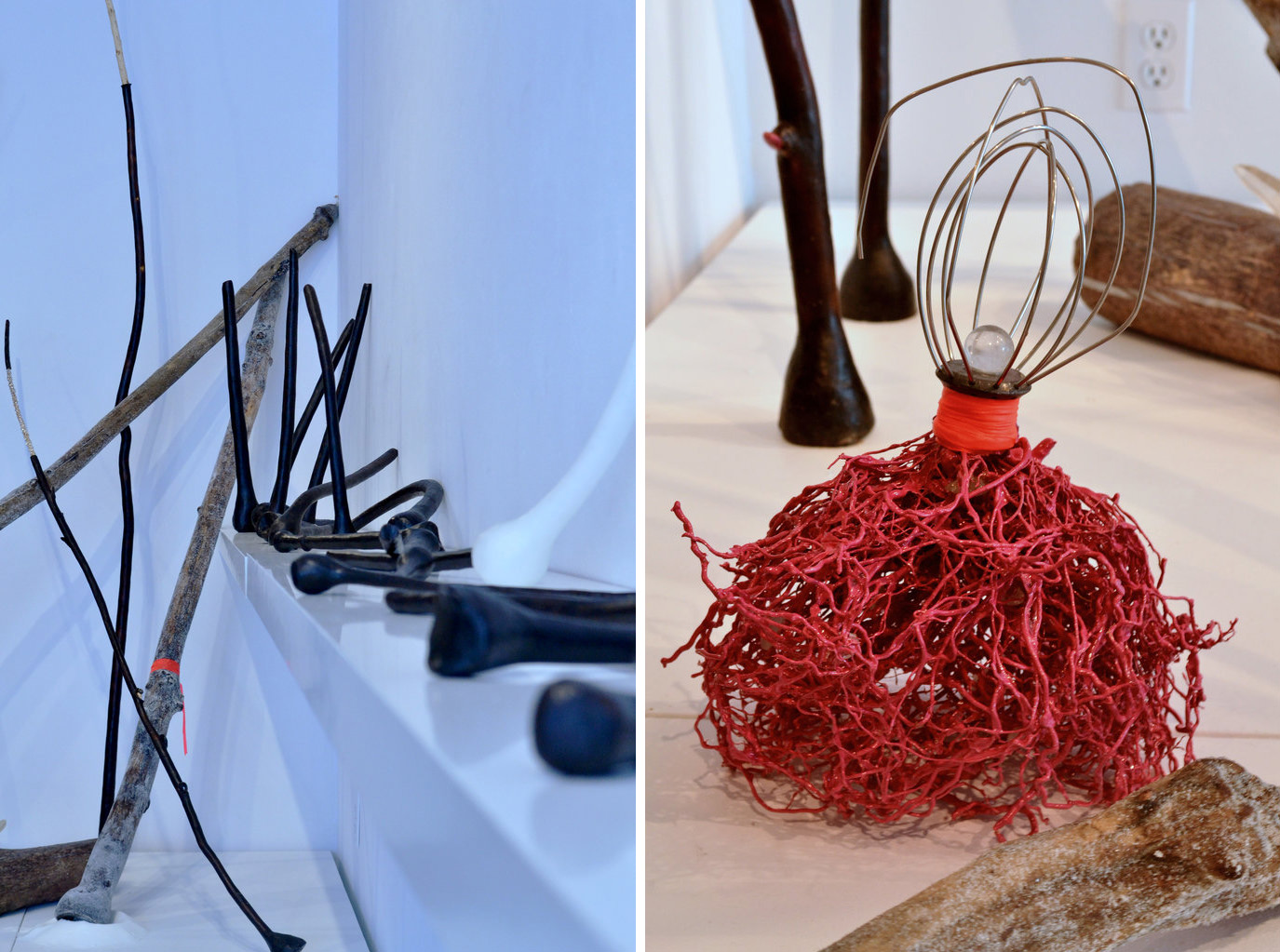In 1957, the Soviet Union launched Sputnik 1, Earth’s first satellite. What followed was a half century of unparalleled technological innovations (ensuing from the often deadly competition between the two world superpowers) that spurred globalization and allowed us to see the world in completely new ways…literally. In addition to connecting humanity via the Internet and other communications technology, digital imaging could accomplish in minutes what explorers and cartographers took years to finish, and to even greater effect and accessibility. Linda Heffernan’s exhibition, entitled Are we there yet?, captures this phenomenon expertly, as if the canvases were mapping entire regions themselves.
 Linda Heffernan, Map A3, acrylic on canvas, 24″ x 24″
Linda Heffernan, Map A3, acrylic on canvas, 24″ x 24″
Heffernan creatively utilizes acrylic paint alongside construction materials such as wire fencing to mimic the digital aesthetic, mapping the Official Plan Review of Clarington and the Highway 407 East Project. The paint envelopes the mesh to create an almost perfect grid pattern on the canvas. The result is a pixelated surface which when combined with the cool, synthetic palette of transitioning gradients of blue, encapsulates a computer screen perfectly. However, it extends this phenomenon even further by giving a three-dimensional texture to an otherwise flattened technology; it compels you to reach forth and feel the pixels, rather than just seeing them. The tones of blue and white represent differences in the land elevation as they would be captured by the satellite. Through her clever manipulation of the mediums, Heffernan gives character to technology that many today would simply take for granted.
 Linda Heffernan 1, Map F, view from the front (left) and view from the side (right), acrylic on canvas, 48″ x 48″
Linda Heffernan 1, Map F, view from the front (left) and view from the side (right), acrylic on canvas, 48″ x 48″
In contrast, Kim Stanford’s Trichotillomania distances itself from the intricacies of modern technology, instead embracing “repeating yet divine banalities like other people’s dirty socks.” Her works consist of assemblages of mundane materials, such as socks, wire, and broken branches, reworked to create unique objects in of themselves. They lose their corporeal form and purpose to become something unrealistic – fragments of a surreal scape – but still originating from routine practices.
 Kim Stanford, My Favorite is Pinky-Purple, root, socks, tape, natural gemstones, rickrack, acrylic paint and medium, glue, 19″ x 14″ x 10″
Kim Stanford, My Favorite is Pinky-Purple, root, socks, tape, natural gemstones, rickrack, acrylic paint and medium, glue, 19″ x 14″ x 10″
Her work, “My Favorite Color is Pinky Purple,” consists of overlapping layers of patterned socks, encased in a layer of sugar glaze to harden the fabric and suspending them in certain positions while emitting a subtle sheen to highlight the colors. Strands of wax-covered roots protrude from the openings of the socks, as if in the process of being reclaimed by nature. This work, along with the rest of her exhibition, “is inspired by her routine of plucking unwanted facial hair every day after day after year.” Visualizing this prosaic activity and suspending it in mid-air, the outcome is almost ethereal, like a manifestation in a dream. The other works, consisting of gem-encrusted wood and branches bound in blackened sugar wax, contribute even more to the notion of an illusory landscape. What was once seemingly insignificant assumes a new alien form. Looking at them, one can recall the nightmarish scenes depicted by artists like Dali, Miro, and Ernst, except here the possibilities are much more open-ended. They are more components of a landscape, giving the viewer a degree of interpretation in visualizing their own surreal world.
 Kim Stanford, The Evolution of Microtactics, wax, wire armature, dimensions variable & You Have to Pull Yourself Out By the Root, root, steel, vinyl ribbon, natural gemstones, acrylic paint and medium, glue, 14″ x 9″ x 8″
Kim Stanford, The Evolution of Microtactics, wax, wire armature, dimensions variable & You Have to Pull Yourself Out By the Root, root, steel, vinyl ribbon, natural gemstones, acrylic paint and medium, glue, 14″ x 9″ x 8″
Text and photo: Simon Termine
*Exhibition information: September 12 – October 4, 2015, loop Gallery, 1273 Dundas Street West, Toronto, (three doors west of Dovercourt). Gallery hours: Wed – Sat 12 – 5, Sun 1 – 4 p.m.
